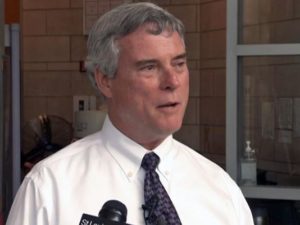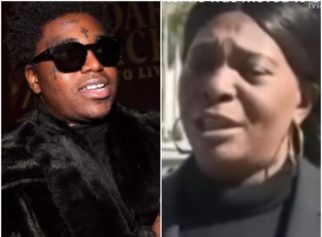While the St. Louis County grand jury empaneled to consider the Michael Brown killing is hearing evidence that corroborates the account of Ferguson police officer Darren Wilson, according to a story in The Washington Post, the entire proceeding continues to raise the question of why St. Louis County prosecuting attorney Robert McCulloch is using such an unusual process for the Brown killing in the first place.
During grand jury proceedings, the prosecutor usually presents a case to the grand jury and tells jury members what charges they should bring against the subject of the proceedings. But instead, as the Post pointed out, McCulloch is overwhelming the grand jury with a flood of evidence, giving the jury the job of deciding what the charges should be — if there are any charges at all.
Critics of the prosecutor say this is the approach prosecutors use when they want to distance themselves from the grand jury’s determination. If the St. Louis County grand jury members come back and decide not to charge Wilson in Brown’s killing — as many observers are now expecting — and the Black community erupts in outrage, McCulloch can claim he had nothing to do with the decision.
McCulloch didn’t even have to use a grand jury. He could have simply chosen to charge Wilson in the killing without going through the complicated grand jury process — a process whose flaws have been exposed as bits of information have steadily been leaked to the media about a process that is supposed to be confidential.
Benjamin Crump, lawyer for the Brown family, said the leaks demonstrate why the family and the Black community have been opposed to the use of a grand jury from the beginning.
“The family wanted a jury trial that was transparent, not one done in secrecy, not something that they believe is an attempt to sweep their son’s death under the rug,” Crump told The Washington Post.
The Post story indicates that the St. Louis County autopsy report corroborates Wilson’s tale that Brown had reached for his gun by finding material “consistent with products that are discharged from the barrel of a firearm” in a wound on Brown’s thumb.
According to forensic pathologist Judy Melinek, who reviewed the report for the St. Louis Post-Dispatch, the finding “supports the fact that this guy is reaching for the gun, if he has gunpowder particulate material in the wound.”
In addition, Melinek claims that the autopsy did not support the account of witnesses who said Brown was attempting to flee or surrender when Wilson shot him in the street in August. Though multiple witnesses have said Brown’s hands were raised in surrender when he was shot, the autopsy reportedly also questions whether Brown’s hands were raised when he was killed, according to media accounts.
But Crump said these attempts at subterfuge would not sway Brown’s family and supporters.
“The family has not believed anything the police or this medical examiner has said,” Crump said. “They have their witnesses. We have seven witnesses that we know about that say the opposite.”



